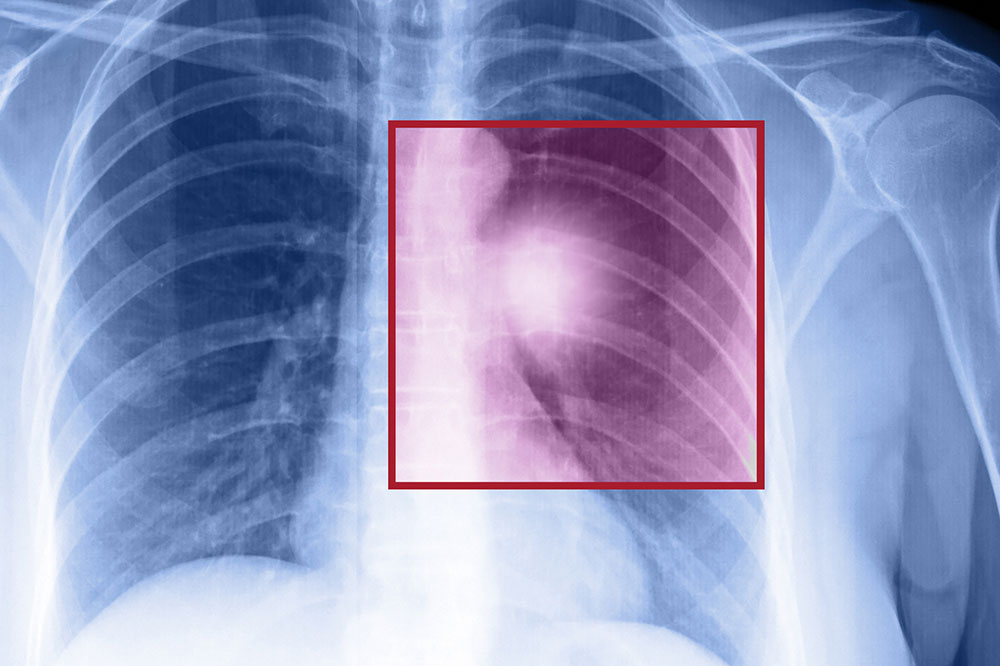Comprehensive Guide to Recognizing Congenital Heart Anomalies: Symptoms, Indicators, and Early Detection
This detailed article provides an in-depth overview of congenital heart anomalies, highlighting key symptoms, early signs, and diagnostic indicators. It emphasizes the importance of early detection for effective management and discusses common symptoms like abnormal heart rhythms, skin discoloration, breathing difficulties, and developmental delays. Understanding these indicators helps caregivers and medical professionals identify potential issues promptly. With comprehensive insights, the article aims to improve awareness about congenital heart defects, encourage early testing, and promote timely interventions to ensure better health outcomes for children and adults alike.

Understanding Congenital Heart Anomalies: Key Symptoms and Indicators to Watch For
Congenital heart anomalies, commonly referred to as congenital heart defects, are structural irregularities in the heart present at birth. These anomalies can involve the heart valves, walls, or blood vessels connected to the heart, leading to disrupted blood circulation and oxygen delivery throughout the body. Recognizing these defects early is vital for effective treatment and management. They are often detected through prenatal ultrasound, echocardiography, or standard diagnostic imaging techniques such as X-rays and MRIs. These anomalies tend to run in families, indicating a genetic component, but environmental factors during pregnancy can also contribute. While congenital heart issues are most commonly diagnosed in infants and children, adults can also exhibit signs, especially if the defect remains undiagnosed or untreated.
Understanding the symptoms and early warning signs of congenital heart anomalies can significantly affect outcomes. The interesting aspect of these defects is their wide range of presentation: some children exhibit symptoms immediately after birth, while others may remain asymptomatic until adulthood. This variability makes vigilance and early detection crucial for preventing complications. In this comprehensive guide, we will explore the various symptoms, including changes in vital signs, skin color, heart sounds, and more, to help caregivers, healthcare professionals, and individuals recognize potential signs of congenital heart anomalies.
Altered Heart Rhythm: Changes in heart rhythm are among the most common indicators of congenital heart anomalies. The normal resting heart rate ranges between 60-100 beats per minute. Deviations such as tachycardia (rapid heartbeat) or bradycardia (slow heartbeat) can be signs that the heart's electrical system is affected by structural issues. Additionally, arrhythmias, which are irregular heartbeats, may originate from abnormal atrial or ventricular activity and require prompt medical evaluation. Detecting these rhythm disturbances early can prevent further complications like heart failure or stroke.
Color Changes in Skin and Lips: A significant indicator of inadequate oxygenation is cyanosis — a bluish discoloration of lips, skin, or extremities. This symptom is particularly common in newborns with congenital heart defects that impair oxygen-rich blood flow. Cyanosis indicates that the heart is not effectively pumping oxygenated blood to tissues, necessitating urgent assessment and intervention. Over time, persistent cyanosis can lead to secondary issues like tissue hypoxia and developmental delays.
Abnormal Heart Sounds: Heart murmurs are abnormal sounds heard via auscultation with a stethoscope. These sounds often result from turbulent blood flow caused by structural irregularities in the heart. Depending on the defect, murmurs can vary in intensity and pitch. Some murmurs are innocent and may resolve without intervention, but persistent or loud murmurs require further diagnostic testing. Early detection of abnormal heart sounds can lead to timely diagnosis and treatment planning.
Chest Discomfort and Pain: Although more common in older children and adults, persistent chest pain or discomfort can sometimes be associated with congenital heart anomalies. It may occur due to increased workload on the heart, abnormal blood flow, or associated arrhythmias. Recognizing this symptom requires careful assessment since chest pain can also result from non-cardiac causes.
Difficulty Breathing and Respiratory Issues: Shortness of breath, rapid breathing, or labored respiration are hallmark symptoms indicating compromised cardiac function. These symptoms can be due to pulmonary congestion from abnormal blood flow, leading to lung overload and impaired gas exchange. They can affect individuals of all ages, from infants experiencing difficulty feeding and crying to adults with exertional dyspnea. Recognizing breathing difficulties early can prompt life-saving interventions.
Dizziness and Fainting: Episodes of dizziness or fainting (syncope) often result from reduced blood flow to the brain, which can occur in congenital heart defects where blood circulation is impaired. Such episodes pose safety risks and necessitate thorough cardiovascular assessment. Persistent or recurrent fainting episodes are strong indicators of underlying structural issues.
Swelling in Limbs and Body Tissues: Edema or swelling, especially in the legs, ankles, or abdomen, often signals fluid retention due to heart failure secondary to congenital anomaly. This occurs because the heart cannot effectively pump blood, leading to congestion and fluid buildup in tissues. Recognizing swelling early can prevent progression to more severe heart failure.
Chronic Fatigue and Reduced Energy Levels: Many individuals with congenital heart defects experience ongoing tiredness, especially during physical activity. The heart’s inability to meet the body's oxygen demands causes fatigue and diminished endurance. In children, early exhaustion may interfere with normal play and developmental milestones, highlighting the importance of early diagnosis.
Growth and Developmental Delays in Children: Congenital heart defects can hinder normal growth, causing children to grow more slowly than their peers. They may also experience delays in motor skills or have difficulties with feeding and respiratory functions. These issues stem from insufficient oxygen and nutrient supply, which affect overall development.
Impact on Cognitive and Motor Development: In some cases, the persistent low oxygen levels associated with congenital heart anomalies can influence brain development. Children may display slower language acquisition, difficulty concentrating, and challenges with impulse control. Early intervention and treatment are essential to mitigate these developmental challenges.
Additional signs and symptoms include excessive sleepiness, weak or absent pulses, and babies being lighter or smaller than typical for their age. Some congenital defects like ventricular septal defect (VSD), patent ductus arteriosus (PDA), or pulmonary stenosis might not present noticeable symptoms initially and could resolve naturally if mild. However, the presence of risk factors such as a family history of congenital heart disease, maternal diabetes, infections like rubella during pregnancy, or certain medications taken during early pregnancy increases the likelihood of congenital anomalies. Recognizing these signs early and seeking timely medical evaluation can drastically improve treatment outcomes and quality of life for affected individuals.





